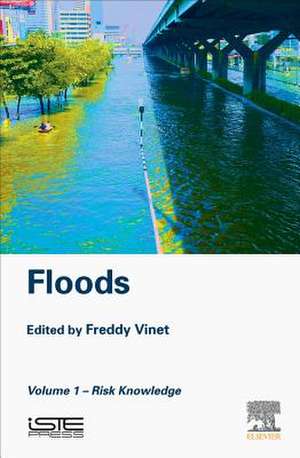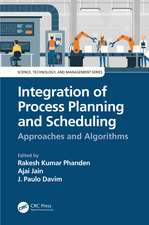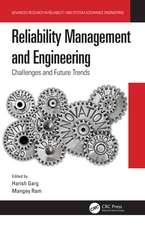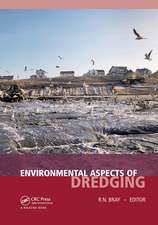Floods: Volume 1 - Risk Knowledge
Editat de Freddy Vineten Limba Engleză Hardback – 14 sep 2017
It is as part of this multidisciplinary approach that this book proposes a review of current knowledge on flood risk. It starts with the ever-increasing impact of flooding in order to conceptualize and understand the constituents of risk.
Although risk knowledge in modeling methods or naturalist approaches remains essential, it is further developed by the fields of economics, human sciences, geography, environmental psychology and history.
This integrated approach to flood risk contextualizes current conclusions on the eventual effects of climate change by showing that human factors are of paramount importance in understanding the process of “risk production.
- The book sets a state of art around the "flood issue" from the description of the phenomena to the management of risk (dikes, dams, reducing vulnerability, management of crisis…).
- The chapters are written by specialists but are accessible to the "mainstream scientist".
- Each chapter exposes knowledge, methodologies, scientific locks and the prospects of each discipline on the theme of floods.
| Toate formatele și edițiile | Preț | Express |
|---|---|---|
| Hardback (2) | 691.87 lei 5-7 săpt. | |
| ELSEVIER SCIENCE – 14 sep 2017 | 691.87 lei 5-7 săpt. | |
| ELSEVIER SCIENCE – 16 noi 2017 | 808.06 lei 5-7 săpt. |
Preț: 691.87 lei
Preț vechi: 903.00 lei
-23% Nou
Puncte Express: 1038
Preț estimativ în valută:
132.39€ • 138.60$ • 109.54£
132.39€ • 138.60$ • 109.54£
Carte tipărită la comandă
Livrare economică 29 martie-12 aprilie
Preluare comenzi: 021 569.72.76
Specificații
ISBN-13: 9781785482687
ISBN-10: 1785482688
Pagini: 364
Dimensiuni: 152 x 229 x 26 mm
Editura: ELSEVIER SCIENCE
ISBN-10: 1785482688
Pagini: 364
Dimensiuni: 152 x 229 x 26 mm
Editura: ELSEVIER SCIENCE
Public țintă
scientists involved in flood risk assessment and managementStakeholders
First and upgrade students in environment, physical geography, hydrology
Cuprins
Part 1. The Impacts of Floods
1. Analysis of Major Flood Events: Collapse of the Malpasset Dam, December 1959
2. Observation and Measurement of Losses Due to Flooding
3. Flood Impacts on Loss of Life and Human Health
4.Flood-related Impacts on Cultural Heritage
5. Natech Events Triggered by Floods: When Floods Cause Technological Accidents
Part 2. The Knowledge of Flood Hazards
6. Techniques and Instruments to Aid in the Monitoring of Flood Events7. Rain and water gauging
7. Flood Hydrology Processes and Their Variabilities
8.Hydrodynamic Modeling to Characterize Floods and Predict Their Impacts
9. Evolution of River Channels and Floods: A Short- to Long-Term Perspective
10. Hydrogeomorphology: Recognition and Evolution of the Flood Phenomenon
11. Structures for Flood Defense and Management
12. Coastal Surges
Part 3. Flooded People and Lands: Human Drivers of Flood Impa
13. The Contribution of Historical Data for the Understanding of Floods and Risk Prevention
14. Assessing Vulnerability to Flooding: Progress and Limitations
15. Toward a Process of Resilience Implementation: Capacities, Models and Strategies
16. Cities at Risk from Water: Between Vulnerability and Resilience
17. Networks in the Face of Flooding
Part 3. The Future
18. Flood Regimes: Recent Development and Future Under Climate Change
19. Changes in Flood Risk: Retrospective and Prospective Approach
1. Analysis of Major Flood Events: Collapse of the Malpasset Dam, December 1959
2. Observation and Measurement of Losses Due to Flooding
3. Flood Impacts on Loss of Life and Human Health
4.Flood-related Impacts on Cultural Heritage
5. Natech Events Triggered by Floods: When Floods Cause Technological Accidents
Part 2. The Knowledge of Flood Hazards
6. Techniques and Instruments to Aid in the Monitoring of Flood Events7. Rain and water gauging
7. Flood Hydrology Processes and Their Variabilities
8.Hydrodynamic Modeling to Characterize Floods and Predict Their Impacts
9. Evolution of River Channels and Floods: A Short- to Long-Term Perspective
10. Hydrogeomorphology: Recognition and Evolution of the Flood Phenomenon
11. Structures for Flood Defense and Management
12. Coastal Surges
Part 3. Flooded People and Lands: Human Drivers of Flood Impa
13. The Contribution of Historical Data for the Understanding of Floods and Risk Prevention
14. Assessing Vulnerability to Flooding: Progress and Limitations
15. Toward a Process of Resilience Implementation: Capacities, Models and Strategies
16. Cities at Risk from Water: Between Vulnerability and Resilience
17. Networks in the Face of Flooding
Part 3. The Future
18. Flood Regimes: Recent Development and Future Under Climate Change
19. Changes in Flood Risk: Retrospective and Prospective Approach
























